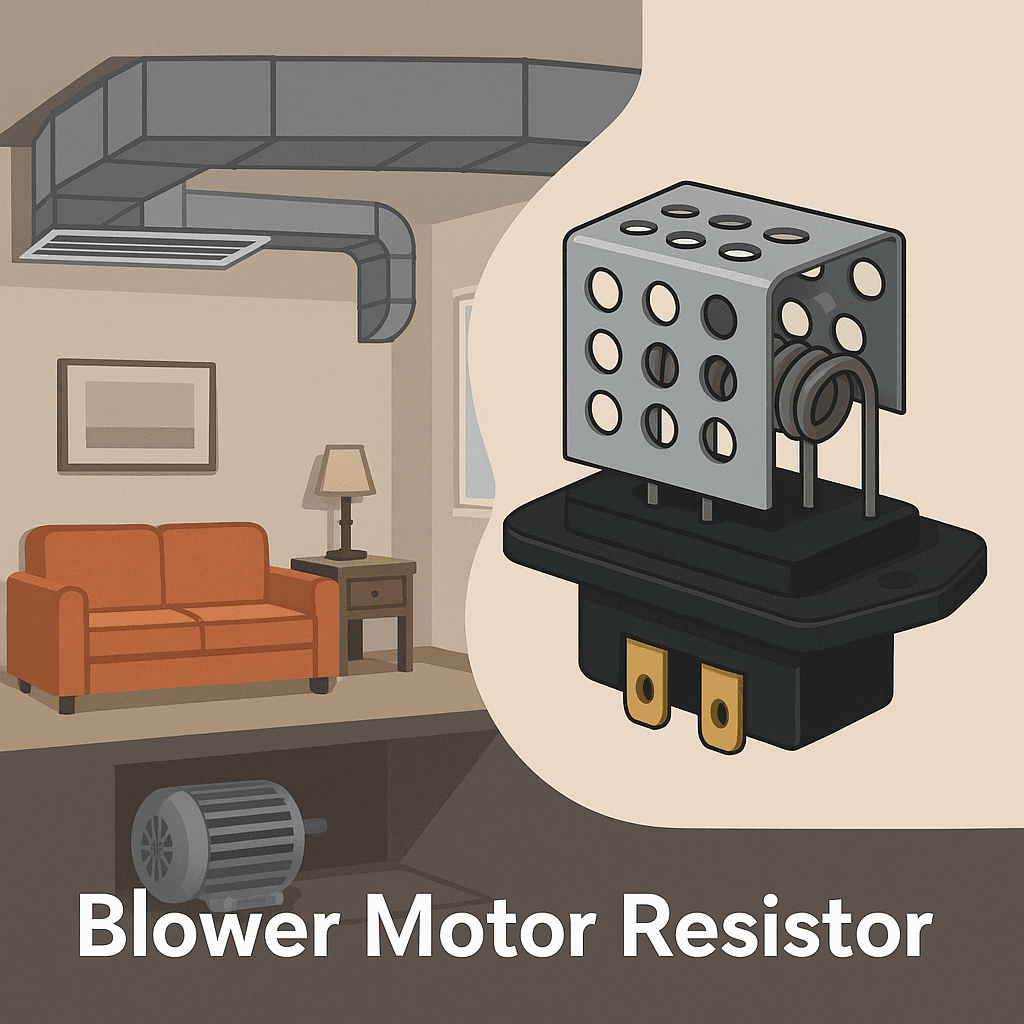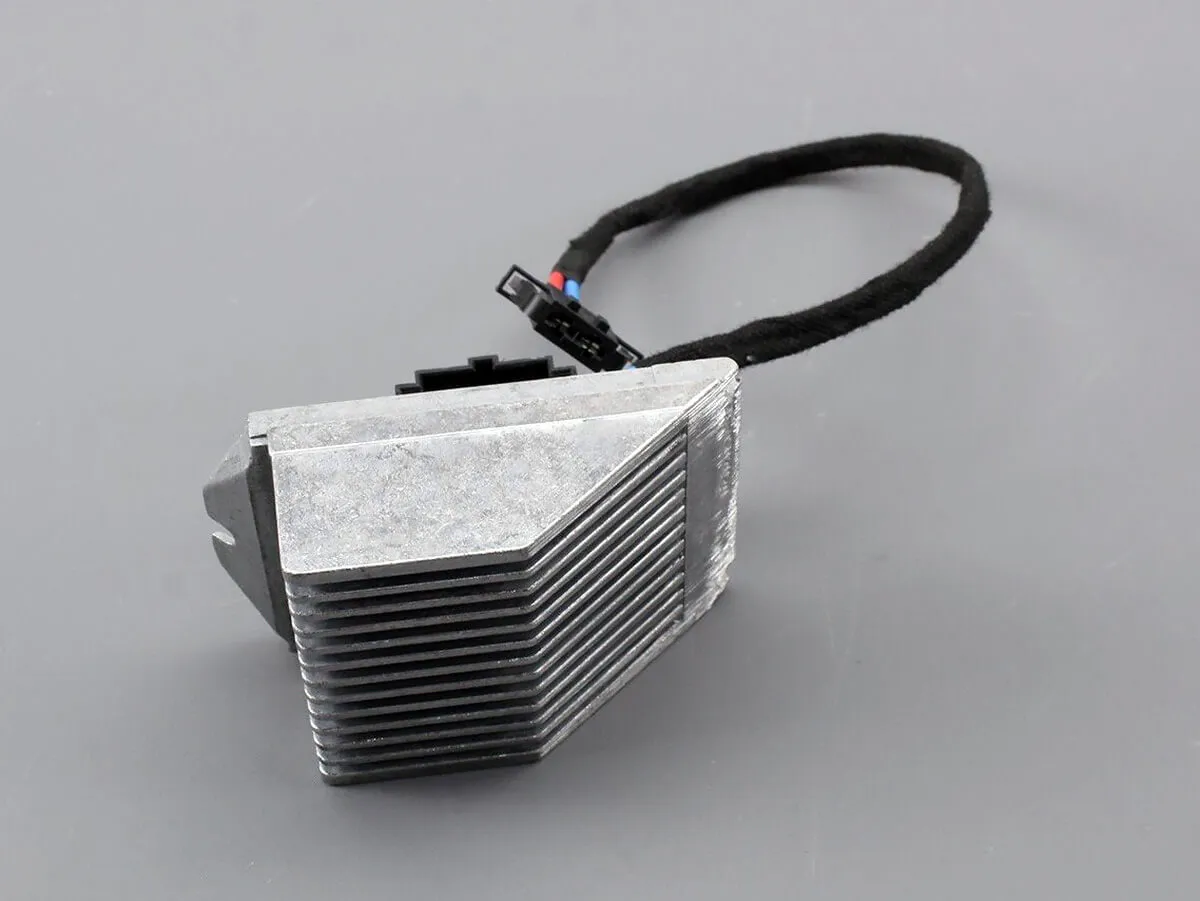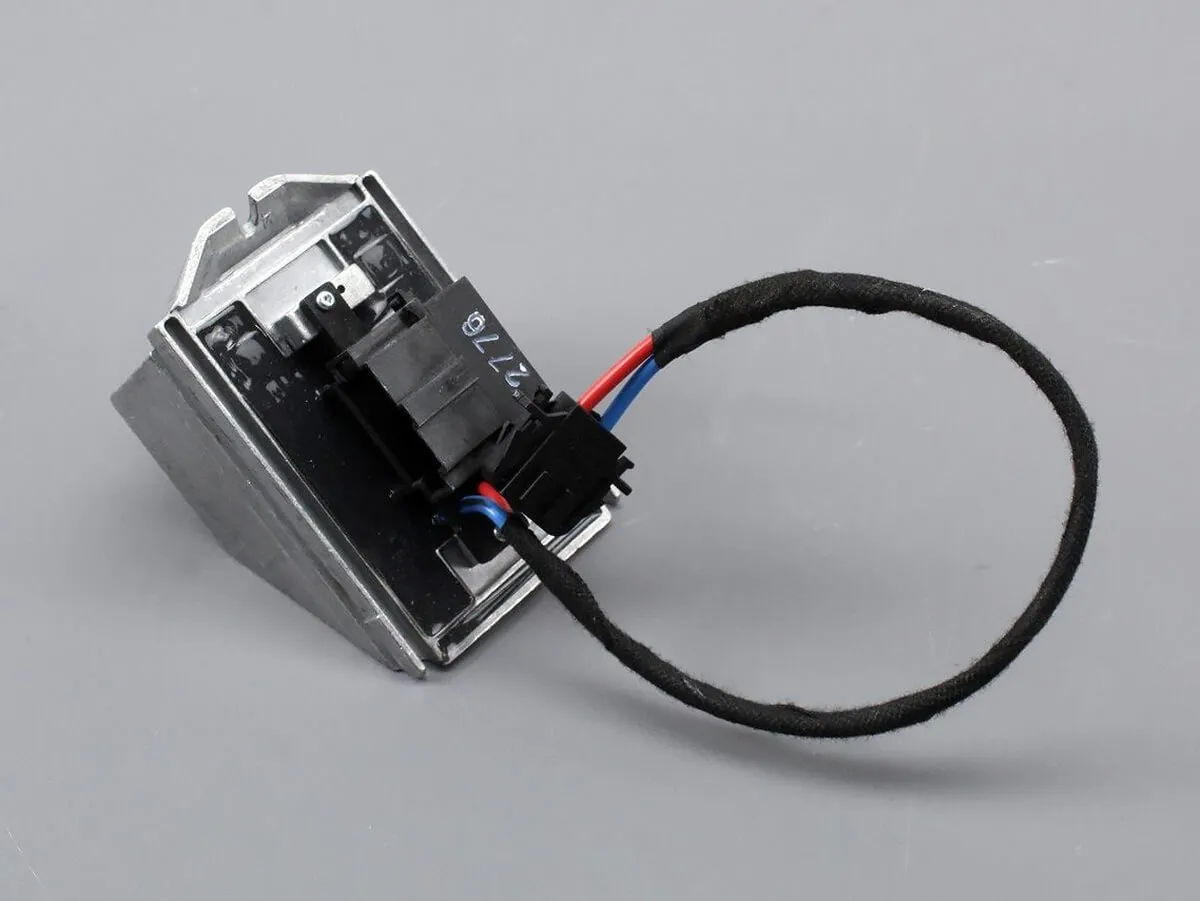Cuando se trata de mantener la comodidad en su hogar, es necesario comprender los componentes de su Climatización El sistema puede ser invaluable. Un componente que a menudo pasa desapercibido hasta que falla es la resistencia del motor del ventilador. Esta pequeña pero crucial pieza desempeña un papel importante en la regulación del... aire acondicionado y sistemas de calefacción en su hogar. Ya sea propietario de una pequeña empresa que busca maximizar la satisfacción del cliente o un padre ocupado con un hogar ajetreado, conocer cómo funciona este componente puede ahorrarle tiempo y dinero.

La resistencia del motor del soplador garantiza que su Climatización El sistema se puede ajustar a diferentes necesidades y situaciones. Al controlar la velocidad del motor del ventilador, le permite ajustar con precisión la temperatura de su entorno, garantizando comodidad en cualquier época del año. Una resistencia del motor del ventilador en buen funcionamiento no solo contribuye a la eficiencia de su... Climatización sistema sino que también prolonga su vida útil al evitar el desgaste innecesario de sus componentes.
¿Qué es una resistencia del motor del soplador?

La resistencia del motor del soplador es un componente eléctrico que controla la velocidad de su Climatización Motor del ventilador. En pocas palabras, permite ajustar el flujo de aire que sale de las rejillas de ventilación regulando la potencia que se envía al motor. Sin la resistencia, el motor solo funcionaría a máxima velocidad, lo que limita la posibilidad de personalizar la climatización de su espacio.
Este componente funciona mediante una resistencia eléctrica para controlar la corriente que fluye hacia el motor del ventilador. Los diferentes niveles de resistencia corresponden a las distintas velocidades del ventilador, lo que permite ajustes como bajo, medio y alto. La resistencia modula eficazmente la corriente, lo que permite adaptar el flujo de aire a sus necesidades específicas de confort, ya sea que busque una brisa suave o un flujo de aire potente.
La resistencia del motor del soplador se encuentra normalmente en vehículos y hogares. Sistemas HVACSu diseño puede variar ligeramente según la aplicación. En la mayoría de los casos, se compone de una serie de resistencias interconectadas, lo que permite un rango de velocidades del ventilador. Comprender su ubicación y funcionamiento es crucial para diagnosticar problemas y realizar reparaciones oportunas, lo que puede mitigar daños adicionales. Climatización sistema.
¿Cómo funciona?
La resistencia del motor del soplador funciona en conjunto con el Climatización Panel de control de su vehículo o casa. Al ajustar la velocidad del ventilador, la resistencia cambia la cantidad de corriente eléctrica que fluye al motor. Este ajuste altera la velocidad del ventilador, modificando así la intensidad del flujo de aire.
Por ejemplo, si configura la velocidad del ventilador a baja, la resistencia ofrece más resistencia, lo que reduce el flujo de corriente y ralentiza el motor del ventilador. Por otro lado, si configura la velocidad del ventilador a alta, reduce la resistencia, lo que permite un mayor flujo de corriente y aumenta la velocidad del motor. Esta interacción fluida entre la resistencia y el panel de control le permite adaptar el rendimiento del sistema HVAC a sus necesidades actuales sin sobrecargarlo.
En términos técnicos, la resistencia divide el voltaje de entrada en cantidades más pequeñas y manejables que el motor del ventilador puede manejar a diferentes velocidades. Esta división se logra mediante una serie de bobinas o elementos resistivos que disipan el calor al resistir la corriente eléctrica. El proceso es altamente eficiente, permitiendo transiciones suaves entre las velocidades y manteniendo una distribución equilibrada de la potencia.
Síntomas de una resistencia del motor del soplador defectuosa

Con el tiempo, como muchos componentes de un sistema de climatización (HVAC), la resistencia del motor del ventilador puede desgastarse. Reconocer los síntomas de una resistencia defectuosa puede ayudarle a solucionar los problemas antes de que se agraven. Estos son algunos signos comunes:
Flujo de aire inconsistente
Si nota que el flujo de aire de su sistema de climatización (HVAC) es irregular o solo funciona a ciertas velocidades, podría ser una señal de que la resistencia del motor del ventilador está fallando. Esta irregularidad puede manifestarse como que el ventilador solo funciona a alta velocidad o no responde a ciertas velocidades. Un flujo de aire irregular puede afectar la comodidad de su hogar, dificultando alcanzar la temperatura deseada.
Cuando la resistencia empieza a fallar, podría no proporcionar la resistencia necesaria para velocidades más bajas, lo que provoca que el motor del ventilador solo funcione en su configuración más alta. Esto no solo afecta la comodidad, sino que también puede aumentar el consumo de energía, ya que el sistema funciona de forma menos eficiente. Identificar y abordar estos problemas a tiempo puede prevenir mayores daños al sistema. Climatización sistema.
Sin flujo de aire
Una falta total de flujo de aire, a pesar de que el sistema esté encendido, también puede indicar un problema con la resistencia del motor del ventilador. Si la resistencia falla por completo, puede impedir que el motor del ventilador reciba energía, lo que resulta en una falta de flujo de aire. Este problema puede ser especialmente problemático en condiciones climáticas extremas, donde mantener un clima interior estable es esencial para la comodidad y la seguridad.
En estos casos, todo el sistema de climatización (HVAC) puede parecer inoperante, lo que provoca incomodidad y posibles daños a otros componentes por sobrecalentamiento o congelación. Diagnosticar rápidamente una falla completa es crucial para restablecer el funcionamiento y evitar reparaciones más complejas. Las revisiones periódicas de mantenimiento pueden ayudar a detectar señales tempranas de falla de la resistencia, evitando así una parada total.
Ruidos inusuales
Los ruidos extraños provenientes del motor del ventilador también podrían ser síntoma de una resistencia defectuosa. Si bien los ruidos pueden indicar varios problemas, cuando se combinan con problemas de flujo de aire, conviene revisar la resistencia. Los sonidos pueden variar desde chirridos hasta silbidos, cada uno indicando posibles problemas eléctricos o mecánicos en el sistema.
Estos ruidos suelen ocurrir porque el motor del ventilador tiene dificultades para funcionar a la velocidad deseada debido a niveles de resistencia incorrectos. Ignorar estos ruidos puede provocar un mayor deterioro del motor o de la propia resistencia. Abordar el problema a tiempo puede evitar la necesidad de reparaciones más importantes y ayudar a mantener el sistema en buen estado general.
Por qué es importante el reemplazo oportuno
Ignorar los síntomas de una resistencia defectuosa del motor del ventilador puede causar problemas más graves en el futuro. No solo puede afectar la comodidad de su hogar, sino que también puede sobrecargar otros componentes del sistema de climatización, lo que podría resultar en reparaciones más costosas. Reemplazar una resistencia defectuosa a tiempo garantiza que su sistema se mantenga eficiente y confiable, minimizando el riesgo de averías repentinas.
Reemplazar la resistencia a tiempo puede evitar mayores daños al motor del ventilador, que de lo contrario podría sobrecalentarse y fallar. Este enfoque proactivo no solo ahorra dinero a largo plazo, sino que también contribuye a un funcionamiento más sostenible de su sistema de climatización (HVAC). Las inspecciones periódicas pueden identificar posibles problemas antes de que provoquen complicaciones más graves, protegiendo así su inversión en la comodidad de su hogar.
Pasos para reemplazar la resistencia del motor del soplador
Reemplazar la resistencia del motor del ventilador es una tarea que algunos propietarios pueden realizar sin problemas por sí mismos. Sin embargo, si no se siente seguro/a con las habilidades para el bricolaje, siempre es mejor contactar con un profesional. Aquí tiene un resumen básico del proceso:
- Identifique la ubicación de la resistencia: Consulte el manual de su sistema de climatización para localizar la resistencia del motor del ventilador. Generalmente se encuentra cerca del motor. Conocer su ubicación exacta le ahorrará tiempo y esfuerzo al acceder a la pieza para su inspección o reemplazo.
- Desconecte la batería: La seguridad es lo primero. Asegúrese de desconectar la alimentación del sistema de climatización antes de comenzar cualquier trabajo. Este paso previene riesgos eléctricos y lo protege a usted y a su sistema de climatización de posibles daños.
- Retire la resistencia vieja: Dependiendo de su sistema, podría necesitar retirar algunos paneles para acceder a la resistencia. Una vez localizada, desconecte el cableado y retire los tornillos que la sujetan. Retirar la resistencia vieja con cuidado garantiza que no se dañen otros componentes durante el proceso.
- Instalación de la nueva resistencia: Coloque la nueva resistencia en la misma posición que la anterior, fíjela con tornillos y vuelva a conectar el cableado. Asegurarse de una conexión correcta es crucial para el correcto funcionamiento de la resistencia y del sistema.
- Pruebe el sistema: Reconecte la alimentación y pruebe el sistema de climatización para garantizar que la nueva resistencia funcione correctamente. La prueba garantiza que la instalación se realizó correctamente y que el sistema ha recuperado su rendimiento óptimo, restaurando la comodidad y la eficiencia.
Ayuda profesional para problemas con la resistencia del motor del soplador
Si bien algunos podrían intentar una reparación por su cuenta, es mejor contactar a un servicio de HVAC profesional como LC Heating and Aire acondicionado Garantiza que el trabajo se realice de forma correcta y segura. Nuestro equipo cuenta con los conocimientos y las herramientas para gestionar eficazmente los problemas de climatización, permitiéndole volver a un ambiente confortable con mínimas molestias. Los profesionales pueden diagnosticar los problemas con mayor precisión y ofrecer una solución a largo plazo, reduciendo la probabilidad de que se repitan.
Confiar en servicios expertos no solo garantiza tranquilidad, sino que también prolonga la vida útil de su sistema de climatización (HVAC). Los profesionales pueden ofrecer asesoramiento sobre mantenimiento preventivo y sugerir mejoras que pueden mejorar la eficiencia del sistema y el ahorro energético. Elegir un proveedor de servicios de HVAC confiable puede marcar una diferencia significativa en el rendimiento y la durabilidad de su sistema.
Conclusión
Comprender la función de la resistencia del motor del ventilador y reconocer las señales de una falla puede ayudarle a mantener la eficiencia y el confort de su sistema de climatización (HVAC). Ya sea que decida reemplazarlo usted mismo o contratar a un profesional, abordar estos problemas a tiempo puede evitar complicaciones adicionales y mantener su hogar confortable durante todo el año. Un enfoque proactivo para el mantenimiento de su sistema de climatización (HVAC) también puede resultar en facturas de energía más bajas y un menor impacto ambiental.
Si tiene problemas con su sistema HVAC y sospecha que hay un problema con la resistencia del motor del ventilador, no dude en comunicarse con nosotros en LC Heating and Aire acondicionadoNuestra experiencia y compromiso con la satisfacción del cliente nos convierten en un recurso confiable para los residentes en el Los Ángeles Área metropolitana. Permítanos ayudarle a mantener su sistema de climatización (HVAC) funcionando a la perfección. Las revisiones periódicas y el asesoramiento de expertos garantizan que su sistema se mantenga en óptimas condiciones, brindándole comodidad y tranquilidad a usted y a su familia.


